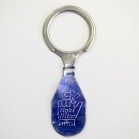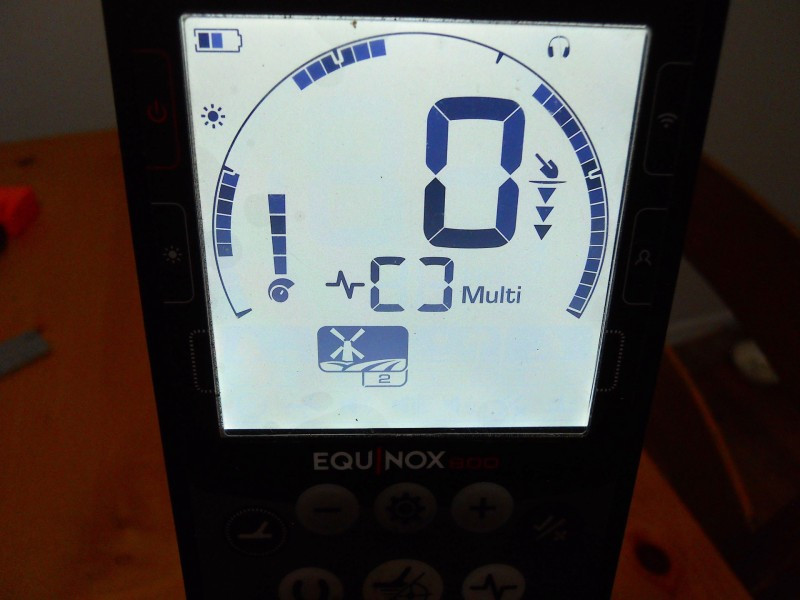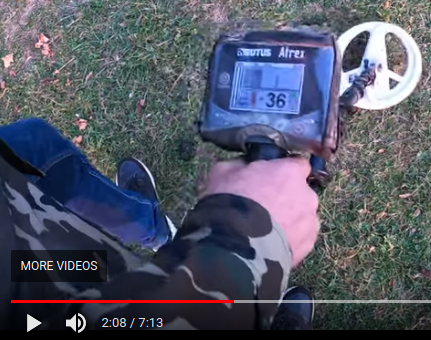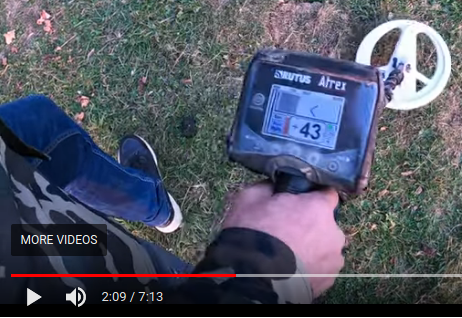-
Posts
5,842 -
Joined
-
Last visited
Content Type
Forums
Detector Prospector Home
Detector Database
Downloads
Everything posted by GB_Amateur
-
I was skeptical intially of interpretting this numerical representation as a date in the form common in the USA. Fortunately 12 January 2022 doesn't make sense unless one has a time machine. Lawrie answered that question in the negative during the September European Tour. It's on one of the videos.
-
It appears the International Meteor Organization gets the data and post some of the info (but not as much as you are wanting, at least I don't see all of that). Having said that I'm so far not impressed with the American Meteor Society who manages the collection of these data from those cameras. There's a long (meaning centuries) history of involvement of amateur astronomers providing data for professionals. (example) I'm not aware of how available the data are. Professional data collected by nationally and internationally funded projects are typically kept private for collaborators who collected it and/or were involved in the equipment development & implementation for a certain period of time (~2 years) and then released via a proposal review method. But this isn't that and as you say if someone is going to provide his/her own equipment (cost) and data through a cooperative network then s/he should have those kinds of rights. If I were interested I would contact the people running the program and get more details. I suspect they would even talk to you via phone/zoom/etc. It seems like a backyard (garage) type of organization. (That's not a putdown. I'm in my 'garage' a lot doing all kinds of projects. ?) From Wikipedia: A steadily growing number of fireballs are recorded at the American Meteor Society every year.[42] There are probably more than 500,000 fireballs a year,[43] but most go unnoticed because most occur over the ocean and half occur during daytime. As mentioned on this subforum before (but not this thread), 'shower' is AFAIK of comet origin whereas meteorites come from asteroid fragment meteoroids. Asteroids and their fragments don't tend to clump together, at least at this time in the solar systems long history. From that same Wikipedia entry: Meteors may occur in showers, which arise when Earth passes through a stream of debris left by a comet, or as "random" or "sporadic" meteors, not associated with a specific stream of space debris.
-
https://toronto.citynews.ca/2022/11/19/meteor-toronto-c8ff042/ AFAIK there is currently no report of anything reaching the ground, but it's still possible that occurred. Beware when reports like this say "hit the earth". I don't think there is evidence for that, yet. From tracking the trajectory, Niagra Falls area is apparently where a meteorites can be found IF anything of measurable size survived. Keep an eye out for updates. And if they got anything like Buffalo, NY area (almost 6 ft. in some spots in last couple days) it may be tough to even access a fall area for a while.
-
Nice video (as usual), Andrew. Cursing a Wheat cent find -- you really know how to hurt a guy.... Just for that you're going to have to answer a bunch of questions: Did you use the Deus 2 for all of DIV 52 and the GPX6000 all of DIV 53? Was the ground mineralization considerably different between the two sites? About what fraction of your bullet finds were Confederate? Do you have an idea of the date of the animal trap? Pre-CW? CW? Post-CW? Does the depth of targets give an indication of age there? I figure the tilling of the ground mixes things up but some of your digs appeared to be in really hard packed clay -- doubt that gets tilled. Good stuff and I appreciate you taking the time to tape and then edit, add music, and upload.
-
Did you read this part? How do you go about training the dogs to work in mineral exploration? PB: You train them to sense certain smells that come from ore. We take ore samples from different mines and areas where we find the ore, and then we train them on that. Right now my dog can sense 20 – 30 different types of ore. They can discover an ore body that is as much as 12m under the ground.
-

Forrest Fenn Treasure Was Found In Wyoming
GB_Amateur replied to Glenn in CO's topic in Detector Prospector Forum
The National Park Service may have taken into consideration that Fenn contacted them to ask permission about revealing the location after that fact, knowing that it could damage the park he so loved. (Well, I think he did that but AFAIK he never stated such. And I guess he could/should have thought about the potential damage before hiding it there.) Would prosecuting such a high profile figure with its associated well known and popular story been accepted or turn into a public relations disaster? And in the process of prosecuting would they have to prove he hid it there by providing evidence for all the world to see the exact location? Seems like NPS had everything to lose and nothing to gain. Again, that's assuming Fenn told them it was hidden in the park and I'm not sure of the accuracy of that conversation. -

Forrest Fenn Treasure Was Found In Wyoming
GB_Amateur replied to Glenn in CO's topic in Detector Prospector Forum
From the things I've read and TV show (Expedition Unknown with Josh Gates) interview and written interviews, Fenn was consistent from day 1. He gave the reasons he hid the treasure, what it contained, and refused to tell anyone where it was, not even his family. When some people took the voluntary risk of going to dangerous places and then died, and their families played results ("if it weren't for Fenn he'd be alive...") BS, and then even law enforcement requested he figure a way to end the quest, he refused. When reminded he was old and may die before it was found and that he should tell someone he refused. Fenn spent a life of adventure, some in the outdoors, with a profession of finding, collecting, buying and selling antiques and collectibles. He had a brush with death (cancer) which apparently gave him not only a reminder of the zest for life but also to share it with others by providing them with an incentive to get outdoors and enjoy more than just within four walls. Did he seek/enjoy fame? Probably. Should we burn him (in effigy) at the stake for that? The conspiracy theorists are calling him a liar and a cheater, simple as that. I can speculate on their motivation but there are probably many reasons, and I don't really give a rat's a__ since they are typically the kind of people who only listen to someone who goes along with their fabricated ideas and any evidence (what many call 'facts') against their theories will just be labeled more lies and fakes. -
Really, because I wouldn't have figured that from your record breaking number of posts on this new detector. ?
-

Forrest Fenn Treasure Was Found In Wyoming
GB_Amateur replied to Glenn in CO's topic in Detector Prospector Forum
I haven't been keeping up since the ridiculous lawsuit was filed, but here's a fairly recent article which gives more details. But I have to quote something there because it should tickle the funnybone of everyone on this site (even the conspiracy theorists): In November 2020, five months after the chest was found, MeatEater podcast guest and journalist Benjamin Wallace published an article in New York Magazine that followed a group of the treasure’s most feverish hunters. They too were certain the chest was hidden in Yellowstone National Park and even employed a dog that could sniff precious metals buried up to 40 feet underground. ... Once they searched that location and had a positive hit from their treasure-hunting dog, they determined they found where the chest used to sit. ? -

Forrest Fenn Treasure Was Found In Wyoming
GB_Amateur replied to Glenn in CO's topic in Detector Prospector Forum
Well, the last clues (AFAIK) Fenn gave about its location were a minimum altitude (don't remember the number but easy to find online) and that it was in the backbone of the Rockies: {New Mexico, Colorado, Wyoming, Montana}. Many people all along thought it might be in Yellowstone NP given that he was known to be fond of that area when visiting while growing up. You probably read/heard that one of the (many) searchers who contacted him privately told him where they were looking and turns out Fenn later said (still well before the treasure was recovered) that they someone was within a stone's throw. BUT he never told that person this, just said something like (paraphrased) "someone who contacted me was in the right spot...". I bet that person is really in regret now. -

Forrest Fenn Treasure Was Found In Wyoming
GB_Amateur replied to Glenn in CO's topic in Detector Prospector Forum
From the linked article: To this day, conspiracy theories abound online about how the chest was discovered. Sounds like you have company. Heritage Auctions is legit, BTW. -
steveg has posted a bunch in another thread. Here's what I think was his first on the subject where he explains how the Minelab FBS detectors give target information with two 'coordinates'. You may want to browse on down and see what else he and others have to say. IMO ML's explanation so far has been a bit vague, and as I might have said in that thread, seems like they may be afraid of making things sound too complicated so the use simple explanations. But the manual hopefully will go into detail.
-
This effect (clad dimes, quarters, etc. and zinc and copper pennies giving grossly mixed ID's) must have something to do with being in the saltwater. It doesn't happen with coins in the ground -- my ground anyway. Zincolns get eaten up which lowers the dTID, but who wants those trash targets? ? The nickel composition of USA 5-cent pieces has been uniform (except WWII silver content version) since it was introduced in 1866 -- 25% Ni and 75% Cu. Same is true for the nickel 3-cent piece (1865-89). Also the clad layers on modern dimes and higher denominations have this composition. The Flying Eagle cents and earliest Indian Head cents are 12% Ni, 88% Cu. In the Eastern USA, acid in the soil -- particularly from decaying leaves -- is hard on high copper content coins including our 5-cent pieces. I think in the dry regions such as much of the inter-mountain West the lack of a water intermediary lessens this impact, although again the salt may get involved with the occasional moisture? Cal_Cobra (among others) has mentioned many times what (acidic) cattle urine has done to many coins -- much worse than other 'natural' processes. One last comment. (Do I get carried away explaining how a watch works when someone asks the time? ?). About 3 years ago I reported on a strange disc I found in a pond. It took may a day or so and some thinking and research but I realized it was the copper core of a clad quarter. The cladding was completely gone! The super concentrated (relative to nature) acidity of the pondwater which was loaded with decayed leaf remnants had eaten all the 25%Cu 75% Ni surfaces away. And they are not that thin -- each layer is 16.7% of the coin's weight and thickness with a pure copper core being the remaining 66.7%.
-

Recommendations For A Simplex Screen Protector?
GB_Amateur replied to RubenAlonzo's topic in Nokta / Makro Metal Detectors
No, it's very easy; just use a scissors. I've never had to replace one and I've had it on my Equinox 4 1/2 years and my other detectors even longer. No downside (if you don't count paying a few dollars/Euros/etc.) and the protection AND the anti-glare property is worth way more than the cost. Hard to believe every detector sold doesn't include one. (Minelab did with the Equinox but the glare was almost as bad as no protector.) Laptop computer manufacturers and cellphone manufacturers figured this out years ago although most laptops don't come with one included, I guess because it dulls the colors...? Actually color phones don't either (at least mine didn't). Glass doesn't scratch easily but it sure does reflect! -
I'm seeing a pattern emerge. It's likely not the whole story, but it does cover a lot of the topic. Individuals have different skillsets when it comes to interpreting audio signals and video signals. Those good at audio analysis often do well with the full tone settings on detectors that have that. For them the visual part may aid in some instances but most of the time it just slows them down. (Of course they can choose the special cases when they think the visual info will help and otherwise just ignore or start digging.) Those with less audio accuity don't pick up many of the subtlties of their audio-tuned brethren. They rely more on the visual side. I'm one of this latter group. That's one of the reasons I'm really looking forward to the Manticore.
-
While that is likely part of it, there are others reasons that probably accompany this. One of them is the optimistic path -- if all the cards fall into place when they're supposed to... Anyone who has ever built anything from scratch has experienced this -- things almost never go as planned if you don't build in some buffer time, and even then the deadline is missed sometimes. (This has happened to me, oh, a couple dozen times in my career, and that was probably >90% occurrence.) Are they lying when they announce the most optimistic case, but don't reveal this qualification? (Remember, we're talking about marketers who in general, it appears, have slightly different code of ethics than some.) Another question to ask is: "what does 'release' mean?" First products sent from the factory? They still have to reach dealers/middlemen and then the end user. If you recall when the Nokta Legend started coming out of the factory, they were initially shipping a few units by (expensive) air carriers to get them to their few select testers/promoters. It took a while (don't remember exactly how long) before the paying customers had them in their hands. I think the Deus 2 release may have been similar. November is halfway over and unless something is announced soon, it appears the optimistic path once again has had some muddy spots that have slowed the wagon train. Hopefully not a mudslide, though. ?
-
Excellent discussion going on here! I've reposted your photo of the coin (& some jewelry?) cherrypicking discrimination pattern you showed a few posts ago. It appears in the iron range you are rejecting -9 thru -6 and then accepting -5 thru 0. Is this iron selection/rejection choice made to help with identifying ferrous falsing from real targets, falsing from ground mineralization variations, or ??
- 48 replies
-
- 1
-

-
- xp orx
- nokta legend
-
(and 1 more)
Tagged with:
-
I paged through the 58 page test report (last document) so you likely were more careful than I (and surely more capable of understanding what was in it). I saw a mid-October date. Could this date you refer to be the date that the contractor(?) who performed the test submitted it back to the FCC? (I hope, I hope...). Even if so that may still be an indicator that approval is still a ways off, though.... I don't know if I'll have good enough weather for detecting over the three winter months, but even so I'd like to have one in my hands just to admire it. ?
-

Back To The Coal Mining Town
GB_Amateur replied to CPT_GhostLight's topic in Metal Detecting For Coins & Relics
That helps me make an educated(?) guess -- lead seal for a canvas bag. I think those were pretty common in earlier times. Sometimes they were decorated and sometimes not. Not much more than a WAG on my part, though. -
Glad to see you point that out, Jeff, as I was questioning it myself. There are probably some out there who can determine in 40 yours if a complicated detector is going to work for them or not. If you can't then that number is likely quite small. This thread has opened my eyes on another subject -- ground conditions. Ground balance is one indicator; mineralization measurments are another. But those two together apparently aren't close to telling everything. I recall reading advice many times regarding buying the right detector for gold hunting -- find out what the detectorists in the area you want to hunt use and buy that. There are obvious pitfalls to that, but it's making more sense after reading this.
- 48 replies
-
- xp orx
- nokta legend
-
(and 1 more)
Tagged with:
-

Back To The Coal Mining Town
GB_Amateur replied to CPT_GhostLight's topic in Metal Detecting For Coins & Relics
Can you give us any more? Size, dTID, composition (if you've figured it out). I figured you and Glenn must have been together. Seems you've reported about this site previously (within the last month?). Looks like you found an intact bottle. In the western sites I've hunted those are almost always broken. My hypothesis is that some were broken when discarded and the rest by vandals getting a thrill from destroying things. Somewhat analogous to people who break the pulltabs (and popouts ?) off drink cans and toss them on the ground, except those cans have no value, unlike many bottles. -
Good video for the audio performance but I wasn't able to get much from the screen other than VDI numbers. Any chance of a closeup (still shot would be fine by me) showing us what target graphical info is there? Honest answer. (The rest of it was helpful, too.) I just don't happen to be amongst those of you who grew up relying on tonal richness and haven't been able so far to learn it. Graphs OTOH, I love 'em! But I get it -- use what you know works for you. You don't need to learn a new technique (especially those with a long learning curve) if the ones you already have work. BTW, the 'experience' I mentioned doesn't mean 'expert'. The few of you who have answered so far are all experienced to some level, and your posts are providing some of the things I was hoping to read.
-
Thanks. Chase posted that very snippet from the manual in the last couple days. What I don't see in either post (maybe I overlooked it) is what exactly the two axes are. The oscilloscope analogy helps a bit (see Lissajous on Wikipedia). But I'd like to know what the two inputs are that are being represented. (Let's wake up @Chase Goldman and see if he'll delve further. ?) I like the signal strength info on this XP plot -- nice additional clue.
-

Pounded Site Still Producing
GB_Amateur replied to Glenn in CO's topic in Metal Detecting For Coins & Relics
Glenn, you consistently impress whether it's gold or coins&relics. All that in one day's hunt? That small container might be for pills. What is the composition of the tokens? Aluminum? They survived quite well. That miner's tag looks like it's made of iron. I have found brass ones but not iron, but I don't dig targets with dTID less than nickel 3-cent piece (except when gold detecting). Along the lines of what JCR said, your junkpile looks like my best finds on many of my ghost town detects.






